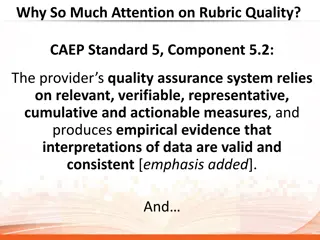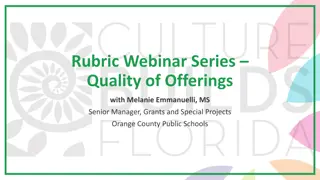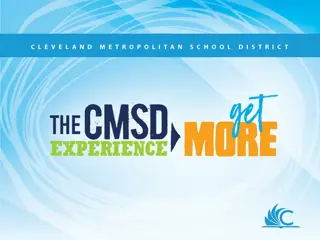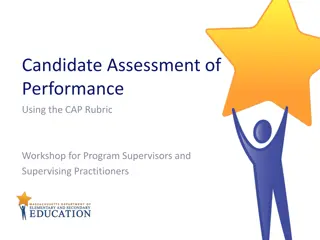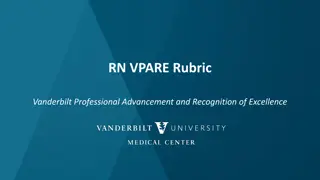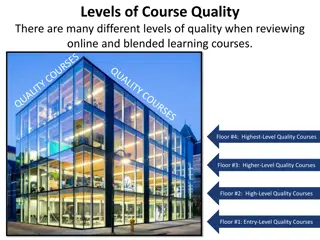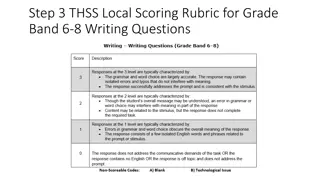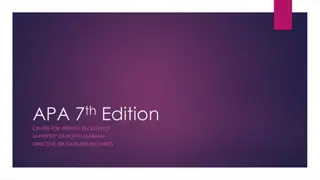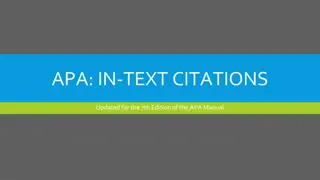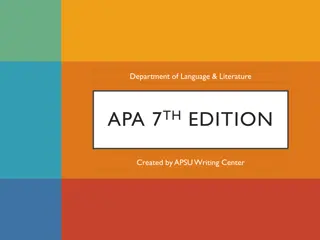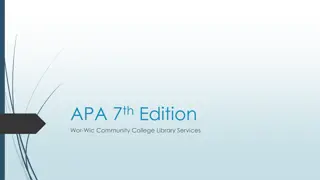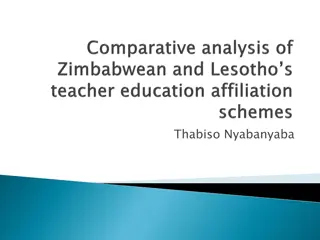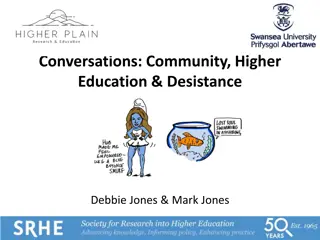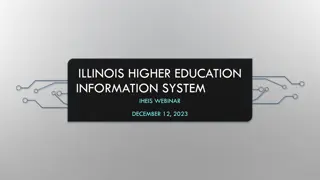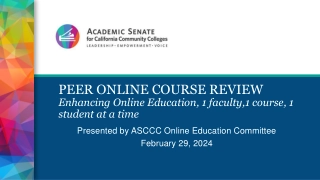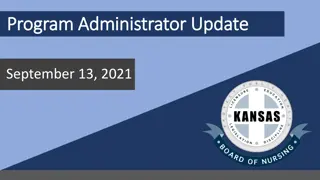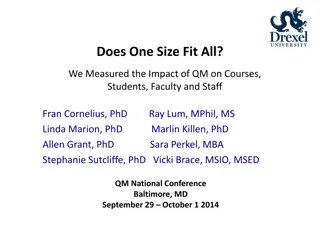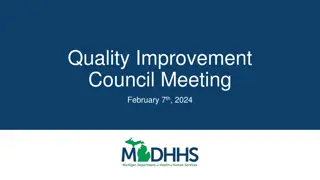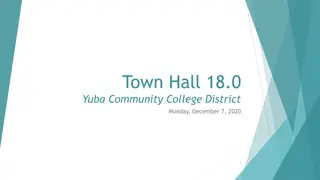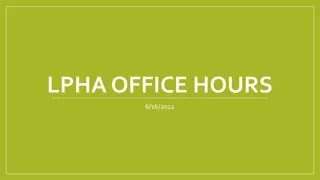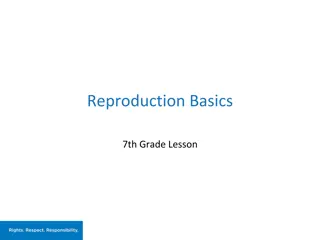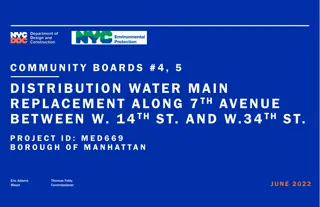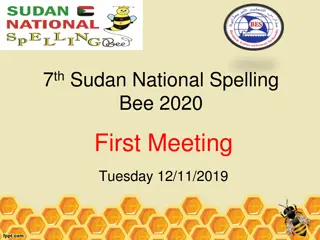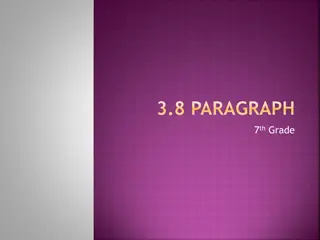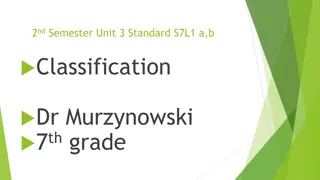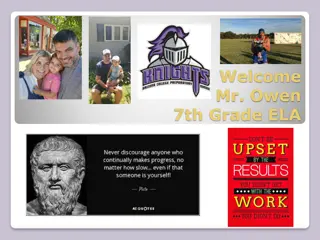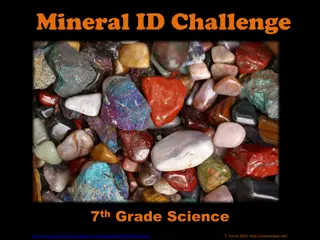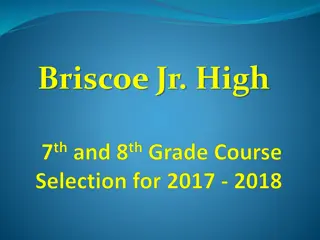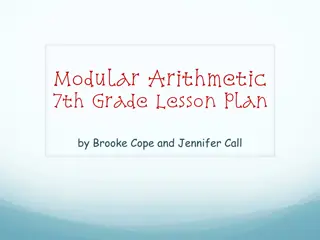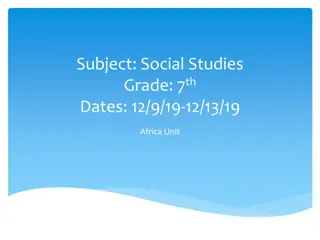Updates to Quality Matters 7th Edition Higher Education Rubric
Quality Matters (QM) has made significant updates to its 7th Edition Higher Education Rubric, including changes to point values, specific review standards, course resources, and overall wording. The new rubric emphasizes creating welcoming and inclusive courses, with key changes in terminology and additional clarifications. To learn more about these updates and access the self-paced workshop, check out the information provided in the content.
Download Presentation

Please find below an Image/Link to download the presentation.
The content on the website is provided AS IS for your information and personal use only. It may not be sold, licensed, or shared on other websites without obtaining consent from the author. Download presentation by click this link. If you encounter any issues during the download, it is possible that the publisher has removed the file from their server.
E N D
Presentation Transcript
Changes to the Quality Matters 7th Edition HE Rubric Dr. Alise Hagan distancelearning@louisiana.edu
Agenda About the QM Rubric Update Changes to QM Point Values Changes to Specific Review Changes Resources
QM Rubric Update QM Rubric Update: Higher Education 7th Edition Available June 5, 2023 Free through January 4, 2024 (then available for fee) Self-paced, fully online workshop consisting of 6 modules Estimated duration: 6-8 hours Must pass Rubric Update Assessment with a score of 85% or better for successful completion.
QM Rubric Update To Register: Log in to MyQM. Click Workshop - Register then Register for QM Rubric Update: HE Seventh Edition Follow steps to register self or others. To Access Course: Log in to MyQM. Click Classroom icon. Locate and click the June 5, 2023, Rubric Update course.
Changes to the Rubric Description QM HE Rubric (6th Edition) 8 42 23 QM HE Rubric (7th Edition) 8 44 22 General Standards Specific Review Standards Essential SRS (3 points) Very Important SRS (2 points) Important SRS (1 point) Total Points Possible Points Required to Meet Expectations (All 3-point Essential SRS also "Met".) 12 13 7 9 100 85 101 86
Key Rubric Changes Overall Wording: "Blended Courses" now "Hybrid Courses" "Learning objectives or competencies" now "learning objectives" Special instructions added for course types, modalities, and reviewers Emphasis on creating welcoming and inclusive courses Other changes to provide additional clarification (editorial, grammatical, etc.)
Key Changes in GS1 GS1: Course Overview and Introduction 1.3 (revised): Communication guidelines for the course are clearly stated. 1.6 (revised): Technical skills and digital information literacy skills expected of the learner are clearly stated. 1.7 (revised): Required prior knowledge in the discipline and/or any specific competencies are clearly stated in the course site. 1.8 (revised): The self-introduction by the instructor is welcoming and is available in the course site. 1.9 (revised): Learners have the opportunity to introduce themselves.
Key Changes in GS2 GS2: Learning Objectives (Competencies) 2.1 (revised): The course-learning objectives describe outcomes that are measurable. 2.2 (revised): The module/unit-level learning objectives describe outcomes that are measurable and consistent with the course-level objectives. Regardless of origin 2.3 (revised): Learning objectives are clearly stated, are learner-centered, and are prominently located in the course. 2.4 (revised): The relationship between learning objectives, learning activities, and assessments is made clear. Course map or objectives codes. Activities (complete more than once) vs. Assessments (complete only once) 2.5 (revised): The learning objectives are suited to and reflect the level of the course.
Key Changes in GS3 GS3: Assessment and Measurement 3.1 (revised): The assessments measure the achievement of the stated learning objectives. 3.2 (revised): The course grading policy is clearly stated, available at the beginning of the course, and consistent throughout the course site. Three parts must be met. Expanded "alternative grading approaches" 3.4 (revised): The course includes multiple types of assessments that are sequences and suited to the level of the course.
Key Changes in GS3 GS3: Assessment and Measurement - CONTINUED 3.5 (revised): The types and timing of assessment provide learners with multiple opportunities to track their learning progress with timely feedback. Emphasis on formative and summative assessments; "smaller, lower-stakes assessments are timed purposefully in order for learners to use timely feedback to track their learning progress." 3.6 (NEW!): The assessments provide guidance to the learner about how to uphold academic integrity. New "Important" (one-point) standard. Met if "the course assessments incorporate or reflect how the institution's academic integrity policies and standards are relevant to those assessments."
Key Changes in GS4 GS4: Instructional Materials 4.1 (revised): The instructional materials contribute to the achievement of the stated learning objectives. Clarify publisher content 4.2 (revised): The relationship between the use of instructional materials in the course and completion of learning activities and assessments is clearly explained. 4.4 (annotation): Up-to-date discipline now includes "current thinking and practice" (beyond publication date). 4.5 (annotation): One of the following types of variety must be present for standard to be met: (a) variety of type; (b) different perspectives / representations of ideas; (c) diverse, non- stereotypical representations of persons or groups.
Key Changes in GS5 GS5: Learner Activities and Learner Interaction 5.1 (revised): The learning activities help learners achieve the stated learning objectives. Clarify difference between activities (5.1) and assessments (3.1) 5.3 (revised): The instructor's plan for regular interaction with learners in substantive ways during the course is clearly stated. Instructor interaction plan must include specified regular intervals and substantive interactions. 5.4 (annotation): Now includes recommendation to "alert learners to sensitive content".
Key Changes in GS6 GS6:Course Technology 6.1 (revised): The tools used in the course support the learning objectives. 6.2 (point value change): This standard went from essential (3-point) to very important (2-point). 6.3 (annotation): "Variety" refers to "different types of aligned technology are used". Note to students about tools requiring high bandwidth. 6.4 (annotation): Now includes note about safeguarding the privacy of learners when web-cameras are in use.
Key Changes in GS7 GS7: Learner Support 7.1 (annotation): Now includes note about providing information to learners with no or limited access to technology. 7.2 (revised): Course instructions articulate or link to the institution's accessibility policies and accommodation services.
Key Changes in GS8 GS8: Accessibility and Usability 8.1 (annotation): Now includes note to meet standard: "if the course's navigation strategies create an easy path for learners to follow." 8.2 (annotation): Now includes clarification that readability "includes content presentation as well as clarity and legibility of text." 8.3 (revised): Text in the course is accessible. Removed accessibility of images. Still Essential (3-point) standard. 8.4 (NEW!): Images in the course are accessible. New Very Important (2-point) standard. Met if "85% of the images are accessible."
Key Changes in GS8 GS8: Accessibility and Usability CONTINUED 8.5 (revised): Video and audio content in the course is accessible. Former 8.4; still Very Important (2-point) standard. 8.6 (revised): Multimedia in the course is easy to use. Former 8.5; still Very Important (2-point) standard. Focus on usability. 8.7 (revised): Vendor accessibility statements are provided for the technologies used in the course. Former 8.6; now Important (1-point) standard.
Resources Rubric Update 7th Edition: https://www.qualitymatters.org/index.php/professional- development/workshops/higher-ed-rubric-update
Announcements Join the Moodle Teaching and Learning Community on Teams! Community discussion and feedback Moodle updates and announcements Tips, tricks, and strategies Everyone needs a little Moodle TLC!


